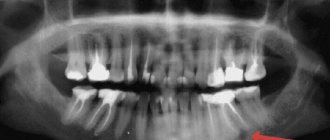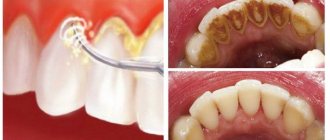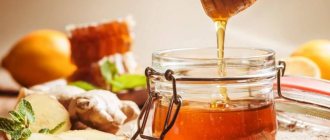Medicinal herbs and decoctions will help to completely get rid of a mild form of the disease, as well as at the very beginning of the development of the disease.
It is necessary to remember: herbal decoctions and infusions are also medicine; they should be used only after consultation with a doctor.
There are forms of the disease that cannot be treated without antibiotics and other medications. Therefore, folk methods and recipes for the treatment of stomatitis are of an auxiliary nature.
Treatment with honey and propolis
Propolis has unique antibacterial and anti-inflammatory properties. An alcohol tincture of propolis for stomatitis allows you to get rid of the resulting aphthae. The drug not only disinfects, but also anesthetizes the inflamed surface.
It is necessary to dissolve a teaspoon of the medicine in a glass of warm water, rinse the mouth with the resulting solution or use it for applications and lubrication of ulcers. It is advisable to first disinfect the affected area with hydrogen peroxide, and then apply propolis.
The medicine is used for:
- rinsing;
- applications;
- wiping.
It is strictly forbidden to apply alcohol tincture directly to canker sores!
Honey has powerful antiseptic properties and is included in many proven folk remedies. However, among doctors there is no clear answer to the question of how to treat and whether stomatitis can be treated with honey. It is believed that it can promote the proliferation of pathogenic bacteria.
Honey is most often used to treat diseases in children.
One of the most popular recipes is the egg-honey mixture. To prepare it you need to take:
- one egg (white);
- a teaspoon of honey;
- 1 ampoule of novocaine;
- one ampoule of vitamin B1 and B6.
Beat the resulting mixture well, take 1 tablespoon orally before meals, keep this portion in your mouth until completely absorbed.
What can be done to prevent sores in the mouth from appearing again?
Completing a course of timely treatment for aphthous stomatitis will reduce the risk of a similar disease of the human oral mucosa in the future, but in some cases it will not completely eliminate this possibility. This especially applies to situations where a person has a hereditary tendency to develop aphthous sores in the mouth, suffers from autoimmune diseases, and is prone to allergies.
In such cases, preventive measures are required:
- Enhanced oral hygiene. It involves not only daily brushing of a person’s teeth and gums twice a day, but also rinsing the oral mucosa with solutions of antiseptics or medicinal herbs in order to prevent stomatitis.
- Balanced diet. Reviewing the diet and diet will help saturate the human body with essential vitamins and microelements and reduce the risk of allergies that can cause aphthous wounds in the human mouth.
- Taking vitamin complexes. If it is not possible to compensate for the lack of nutrients in the body with nutrition, then to prevent stomatitis a person can regularly take vitamin complexes, the composition of which, doses and duration of administration will be determined by your attending physician, based on the results of the tests.
- Taking immunomodulatory drugs. Today, there are many remedies that stimulate the immune system and encourage the body to resist diseases. They can be either of plant origin or synthesized in the laboratory. The selection of such drugs is individual for each person and is carried out by a doctor.
- Compliance with preventive measures, timely treatment of the disease and following the recommendations of the attending physician will help a person avoid relapses of aphthous stomatitis and the reappearance of wounds in the mouth in the future. Be attentive to yourself and your health, listen to the signals that your body gives, and at the first signs of disease in the oral mucosa, seek help from a dentist.
You should not self-medicate stomatitis and use the advice of friends or information found on the Internet, since the exact cause of sores in the mouth and stomatitis can only be identified through diagnostic methods. And the selection of treatment is determined in accordance with the diagnosis, and in each case it is individual. Dentistry "LeaderStom" offers its assistance in the treatment of aphthous stomatitis and other diseases of the oral mucosa. Contact us and we will help you identify the cause of the disease and select medications accordingly.
Herbal infusions
In modern herbal medicine, both herbal decoctions (chamomile, sage, yarrow, oak bark) and tinctures (calendula, propolis) are used to successfully treat oral diseases. Traditional methods of treating stomatitis allow you to:
- relieve inflammation of the mucous membrane;
- reduce pain and swelling;
- relieve itching, reduce burning sensation;
- cure ulcers (aphthae) formed on the surface of the mucous membrane;
- improve the patient’s overall well-being;
- prevent relapses of the disease.
Chamomile, aloe, sage, oak bark for stomatitis can significantly reduce swelling and soreness of the mucous membrane, and prevent the development of the inflammatory process. They have an anti-inflammatory effect.
Herbal infusions can be used either alone or in combination with traditional medicines.
- Decoctions . To prepare them, you need to grind the herb in a coffee grinder, pour boiling water over it in a certain proportion, boil for at least 10 minutes, and then leave to infuse. A decoction is prepared from one plant (for example, chamomile, calendula, sage, St. John's wort) or from several (herbal mixture). After infusion, it should be strained and stored in the refrigerator for no more than three days. In the treatment of oral diseases, decoctions of chamomile, yarrow, sage, calendula, and cinquefoil are most often used. It should be remembered that when treating stomatitis with herbs, the therapeutic effect does not occur immediately, but 1-3 weeks after the start of therapy. Therefore, the patient must tune in to a long-term regular process.
- Infusions . They are prepared in much the same way, only they should not be boiled. Usually the herbal mixture is poured with boiling water, tightly closed and infused, after which it is filtered. It should be stored in the refrigerator and diluted with water before use. Infusions are prepared from the same herbs as decoctions. You can infuse herbs not with water, but with alcohol. They have a powerful antiseptic and anti-inflammatory effect.
- Solutions . Medicinal solutions are prepared immediately before use; their preparation consists of diluting the finished product with boiled water to obtain the required consistency. In no case should you apply undiluted alcohol infusions to the surface affected by stomatitis, as there is a high probability of getting a burn to the mucous membrane.
Why does my mouth hurt?
Pain in the mouth can be caused by both local and systemic factors. Painful sensations in the oral cavity usually do not bother you in isolation. As a rule, they are combined with other symptoms characteristic of a certain pathology: hyperemia and swelling of the mucous membrane, rashes and ulcers in the oral cavity, plaque, unpleasant odor, difficulty chewing and opening the mouth, and salivation. Pain in the mouth, despite its local nature, disrupts general well-being and performance, and prevents normal diction and proper food intake.
Lip pain
Is local or diffuse in nature. It can be caused by traumatic, infectious, chemical, physical factors, or tumor lesions. The pain is usually combined with dry lips, cracks, redness, blistering rashes, ulceration, and dry crusts. Common causes of lip pain:
- Cheilitis.
It may be a consequence of sensitization (allergic cheilitis), neurogenic causes (exfoliative, macrocheilitis), unfavorable climatic factors (meteorological cheilitis), vitamin deficiency (hypovitaminous cheilitis), infection (glandular cheilitis). Common signs are damage to the red border, accompanied by dryness, painful cracks and ulcers, swelling, burning, itching. - Labial herpes.
In the prodromal period, local tingling, tingling, itching in the area of the upper or lower lip is noted. Then a bubble containing liquid appears. After spontaneous or forced opening of the vesicle, an ulcer forms in its place, which dries out and becomes covered with a scab. When the crust cracks, ichor oozes out from under it. Elements of herpes are sharply painful at all stages. It takes 10-12 days from the prodrome to complete epithelialization. - Lichen planus.
May affect the red border of the lips, tongue, and oral mucosa. The main elements are papules, which, when fused, form whitish areas of keratinization. Sometimes LLP occurs with the formation of weeping areas, erosions, blisters - in these cases, a burning sensation and severe pain in the mouth are added, making it impossible to eat. - Trigeminal neuralgia.
Trigeminal neuralgia is a common cause of facial pain. When the maxillary and mandibular branches of the trigeminal nerve are damaged, sharp, intense shooting pains in the cheek, upper or lower lip, or jaw, reminiscent of electric shocks, may occur. - Injuries.
Lip burns can be caused by drinking hot drinks, exposure to harsh chemicals, or exposure to sunlight or open flames. With mild burns, pain, swelling of the lip, and hyperemia appear; in severe cases, blisters, scabs, and tissue necrosis form. Mechanical damage (cuts, biting) to the lips is accompanied by pain and bleeding. - Lip cancer.
Externally it may appear as a warty or papillomatous growth or infiltrate. At first, the elements do not cause discomfort, but their ulceration, infection, and decay are accompanied by severe pain in the mouth.
Transient swelling and soreness of the lips are observed after a number of cosmetic procedures and surgical interventions: permanent makeup, piercing, injection of hyaluronic fillers, cheiloplasty.
Mouth pain
Pain in gums
As a rule, it is associated with diseases of the oral cavity or behavioral factors (incorrect selection of a toothbrush, use of toothpicks, smoking). Pathologies that cause pain in the gums:
- Inflammatory processes.
Painful sensations in the mouth are a pathognomonic sign of inflammatory diseases: gingivitis, stomatitis, periodontitis. With gingivitis, the gums become swollen, painful, and bleeding. Stomatitis can occur with the formation of plaque in the mouth, extremely painful aphthae and ulcers. With periodontitis, pain in the gums is aggravated by bad breath, the formation of periodontal pockets, suppuration, and loosening of teeth. - Periodontitis.
In acute periodontitis or exacerbation of a chronic process, painful swelling of the gums occurs in the area of the affected tooth. When the pyogenic flora is activated, a flux is formed, accompanied by throbbing pain. When it is opened, a fistula may form. Severe pain occurs during chewing and speaking. - Injuries.
Damage to the gums can occur both from direct mechanical impact and from difficult tooth eruption. In the latter case, pericoronitis develops. Injury to gum tissue and pain are also accompanied by dental procedures: tooth extraction, installation of a dental crown/prosthesis, dental implantation, operations (gingivotomy, gingivoplasty, etc.). - Allergy.
May be caused by a reaction to denture materials, medications, or local anesthetics. It occurs in the form of allergic stomatitis, cheilitis, glossitis. Characterized by hyperemia, burning, swelling of the mucous membrane, hypersalivation, pain when eating.
Tongue pain
Pain in the tongue is associated with local infectious-inflammatory, traumatic, allergic, neurogenic, and neoplastic processes. In addition to local factors, pain in the mouth can be provoked by systemic diseases: hypovitaminosis B1, B2, B12, pellagra, iron deficiency anemia, collagenosis, leukemia, etc. Local causes of pain in the tongue:
- Glossitis.
Pain of varying intensity is observed with desquamative, candidal, herpetic, allergic, traumatic and other glossitis. Swelling, glossodynia, plaque, and changes in taste sensitivity may also occur. - Xerostomia.
It is a consequence of radiotherapy, chemotherapy, medication, smoking, Sjogren's disease, diseases of the salivary glands. Dry mouth makes eating, swallowing, and speaking difficult and painful. - Glossalgia.
It occurs with attacks of burning pain in the tongue, which are more pronounced in its tip and lateral surfaces. There is hyperemia or pallor of the tongue. Repeated painful attacks change the psychological state of patients - they become irritable, suspicious, and tearful. - Galvanism.
Develops as a result of irrational prosthetics. It is characterized by swelling and hyperemia of the tongue, sensations of pain, burning, rawness, and a metallic taste in the mouth. - Neuropathies.
Pain in the tongue of neurogenic origin occurs with neuralgia of the glossopharyngeal and hypoglossal nerves. In the first case, the pain is localized in the area of the root of the tongue, in the second - in the back of the tongue. More often it is unilateral in nature, occurs in paroxysms, and is provoked by talking, coughing, and swallowing. It has an intense pulsating, drilling, burning character. - Tongue cancer.
Manifests with the appearance of painless or slightly painful formations: growths, ulcers, compactions. In the advanced stage, local or diffuse pain occurs, radiating to the jaw, ear, and temporal region. Salivation increases, foul breath appears, spontaneous bleeding from the tongue, difficulty articulating and swallowing.
Dental diagnostics
Folk remedies for stomatitis in children
Treatment of stomatitis in children with folk remedies involves the following measures:
- rinsing with antiseptic solutions;
- wiping the affected surface of the mucous membrane with medicinal decoctions;
- applying medicinal mixtures to the surface of the ulcers.
For rinsing it is best to use:
- water-soda solution (1 teaspoon of soda per 1 glass of water);
- decoction of calendula or chamomile flowers.
Suitable for wiping:
- propolis tincture solution;
- calendula tincture solution;
- freshly squeezed aloe juice.
Apply to the surface of the ulcers:
- honey;
- egg white;
- rose jam;
- a mixture of egg white, honey and novocaine.
The drugs are applied to the surface of the mucous membrane until completely absorbed.
Dosages and methods of application
The medicine is used only externally:
- Adult patients - applied every 4 hours, up to 5 times a day. Treatment should be carried out with the first appearance of symptoms of the pathology, with redness of the skin. Therapy is also allowed if papules and vesicles appear on the dermis. The duration cannot exceed 4 days; in difficult cases, an increase to 10 days is allowed.
- Children - the lack of comprehensive research does not allow use by minors under 12 years of age. Therapeutic manipulations are carried out according to a standard algorithm.
To prevent transmission of infection, the patient should wash their hands with soap before applying the ointment and after treatment. Patients with renal or hepatic insufficiency do not require special dosage adjustments - the drug has insignificant systemic absorption.
Use for pregnant women is justified if the benefit to the mother exceeds the potential risk to the fetus. Studies have shown that taking acyclovir in different dosage forms did not cause congenital anomalies in children.
Restrictions on therapy are indicated only for nursing women, when using systemic agents with an active component. The choice of medication is decided by the doctor. Self-medication during pregnancy and breastfeeding is unacceptable due to the risk of allergic reactions to any medications, even previously used ones.
Features of the treatment of aphthous and candidal stomatitis
- In the aphthous form of stomatitis, painful ulcers (aphthae) form in the patient's mouth. To prevent the development of the inflammatory process, it is extremely important to maintain cleanliness. It is necessary to rinse your mouth with a soda solution after each meal. You can use a solution of hydrogen peroxide or propolis for rinsing.
- Thrush, or candidal stomatitis, is a fungal disease that most often affects children. A white cheesy coating forms on the surface of the mucous membrane, the patient complains of itching and burning. At the initial stage of development of the disease, you can get rid of its symptoms with the help of homeopathy.
Note that in adults, folk remedies for stomatitis are practically no different from children’s, except that the proportion of dilution of solutions for children is somewhat different. Typically, half the “adult dose” is used for children.
Composition, indications and contraindications
Cream and ointment for topical use containing the active ingredient acyclovir. Additional ingredients are presented:
- poloxamer 407;
- cetostearyl alcohol;
- sodium lauryl sulfate;
- white soft and liquid paraffin;
- dimethicone 20;
- propylene glycol;
- purified water;
- arlacelom 165.
The white or almost white mass has no lumps, grains, impurities of foreign substances or signs of separation.
The drug is used to treat infectious lesions of the face and lips caused by recurrent labial herpes. If you have a weakened immune system, the medicine is not prescribed; a doctor is consulted before therapy.
The medication is contraindicated in patients with registered allergies:
- to acyclovir;
- valacyclovir;
- propylene glycol;
- any excipient included in the ointment.
Before starting procedures, it is necessary to conduct a test for the development of a spontaneous allergic reaction. A small amount of the drug is applied to the inner surface of the elbow. If after 20 minutes there is no redness, blistering or itching on the skin, then the cream can be applied.
Garlic for the treatment of stomatitis
The use of garlic for stomatitis collects many positive reviews from those who managed to cope with the disease. This may seem surprising, because garlic is an aggressive product that can have an irritating effect on the oral mucosa. In fact, using it in its pure form is strictly prohibited.
At the same time, garlic has a lot of useful components that have antimicrobial, antibacterial, and other beneficial effects. A paste is prepared on its basis with the addition of kefir, flour and honey.
The recipe is simple:
- take a tablespoon of kefir, add a tablespoon of liquid honey;
- Chop 2-3 cloves of garlic and add to the kefir-honey mixture;
- add a little flour to get a paste consistency;
- Apply to areas affected by stomatitis 2-3 times a day.
Advice! If your child has an unpleasant smell and taste of garlic, you can add more honey, but this recipe is not at all suitable for small children.
Diagnostics
To determine the etiology and therapeutic tactics for pain in the mouth, a comprehensive dental examination is carried out, and, if necessary, an examination of the ENT organs. A number of specialists are involved in diagnosing the causes of pain in the mouth: dental therapist, periodontist, otolaryngologist, allergist-immunologist, neurologist, oncologist, etc. Taking into account nosology, the list of recommended studies includes:
- X-ray diagnostics (OPTG, CT of the jaws, sialography);
- dental examination (visual and instrumental examination, determination of periodontal index);
- ENT diagnostics (pharyngoscopy);
- sonography (ultrasound of the salivary glands, tongue);
- allergy examination (allergy tests, study of individual allergens);
- laboratory tests (analysis of the biocenosis of the oral cavity using bacterial culture, PCR).










